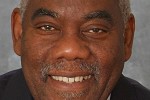By Dr Selwyn R. Cudjoe
January 23, 2024
 No fallen prime minister since Eric Williams has ever received such an outpouring of sympathy as Basdeo Panday did. On Thursday, the mayor of Siparia and his council members expressed the hope that, “His legacy as a dedicated servant leader, a man of unwavering principles, and a champion for the people of Trinidad and Tobago will always be remembered and cherished.” (Express, January 18). I am not sure their wish will come to pass.
No fallen prime minister since Eric Williams has ever received such an outpouring of sympathy as Basdeo Panday did. On Thursday, the mayor of Siparia and his council members expressed the hope that, “His legacy as a dedicated servant leader, a man of unwavering principles, and a champion for the people of Trinidad and Tobago will always be remembered and cherished.” (Express, January 18). I am not sure their wish will come to pass.
Trinbagonians honour Williams mainly because of his daughter Erica’s efforts. Nobody remembers Chambers, who succeeded Williams. Not one scholarly book has been written about his contribution to the nation. Although ANR Robinson took himself seriously, no one has written a serious biography of his life, although Denis Pantin wrote a new foreword to his 1972 book, The Mechanics of Independence.
Patrick Manning has fared no better in this regard, even though he was a hardworking and visionary prime minister. Unlike Williams, nobody has taken up the task of memorialising his contributions. Panday has had a few biographers, but history will determine how those works fare. If past experience is any guide, Panday’s legacy will not endure unless someone works diligently to make it do so.
It is not an anomaly that Panday’s contribution will soon be forgotten by the nation. These things are not important to us. “Live for today. Let tomorrow take care of itself” is our guiding principle. “No one,” we like to boast, “can fete like we.”
A few days ago while I was staying at a hotel resort in Barbados, some calypsoes were being played to entertain the guests at the swimming pool. After listening for a while, my partner asked me: “Is the word ‘bacchanal’ in every calypso?” Maybe this glorification of bacchanal is emblematic of our lack of seriousness as a people.
On Sunday morning, I attended the morning service at Society Chapel, which was renamed Holy Cross Church in 1954. It was a little chapel where the slaves worshipped for over 100 years. Like Jamaica, Barbados is a homogeneous society with a long history of people congealing into a harmonious group.
Barbados has always been plagued by hurricanes. In 1819, a chapel of wood was built in Society to accommodate the enslaved. It was immediately blown down by a hurricane. On June 3, 1821, a stone chapel and a schoolhouse were erected to serve as church for the enslaved adults and schoolhouse for the enslaved children respectively. Both structures were devastated by a hurricane.
However, in 1833, a new stone chapel was erected in Society and consecrated by Lord Bishop William Coleridge. “This chapel, along with the other two which preceded, was always called ‘Society Chapel’”.
A report of the consecration appeared in a Barbados newspaper. It read: “Tuesday last exhibited one of the most delightful sights imaginable–that of the whole slave population of a large estate, as well as many from neighbouring properties, forming a procession into that Chapel, many of them married couples, all neatly dressed, and showing by their orderly deportment, serious attention, and composed yet cheerful countenances, how well they appreciated the comforts they enjoyed, and the blessings bestowed on them.” (“The Consecration of Society Chapel”).
That was the chapel in which I worshipped last Sunday.
This is not to suggest that all was sweetness and light for the enslaved. From April 14-16, 1816, the largest slave revolt in Barbados took place. It was led by an Africa-born slave named Bussa. A select committee of the British House of Assembly reported as follows: “During this period of anarchy and confusion, nearly the whole of the four largest and most valuable Parishes exposed to the ravages of the Insurgents—the canes upon one-fifth of the Estates of the Island burnt—the dwelling house and buildings upon a great number broken or destroyed—the white inhabitants (many of whom escaped with difficulty) either compelled to seek their safety in flight, and leave their properties a prey to these infuriated ravagers, or condemned to be the witnesses of their destruction—and loss of property to the amount of one hundred and seventy thousands pounds.”
When I visited Barbados 30 years ago, there was a bronze statue of Lord Horatio Nelson in Bridgetown, the capital of the island that majestically guarded the island. It stood before a mini-Parliament Building whose architecture imitated the British Parliament. It was erected in 1813 by the British planters who ruled the island.
In 2017, on the eve of Barbados Independence Day celebrations, some patriots daubed Lord Nelson’s statue with blue and yellow paint, and left the following message on it: “Nelson is a racist and white supremacist.” In 2020, Prime Minister Mia Mottley removed the statue from its downtown prominence and installed the National Heroes Square where their excellencies Bussa, Clement Osbourne Payne (born in Trinidad), Robyn Rihanna Fenty and eight other distinguished Barbadians stand where Nelson once stood.
I do not believe that Panday will live long in our national memory. We are more excited by fete, partying and mauvais langue than we are about honouring the patriotic deeds of our citizens. Like Barbados, we should assign a public space for our national heroes and set aside one day each year to remember them. It’s the least we can do to ensure that their contributions remain a cherished part of our national heritage.
